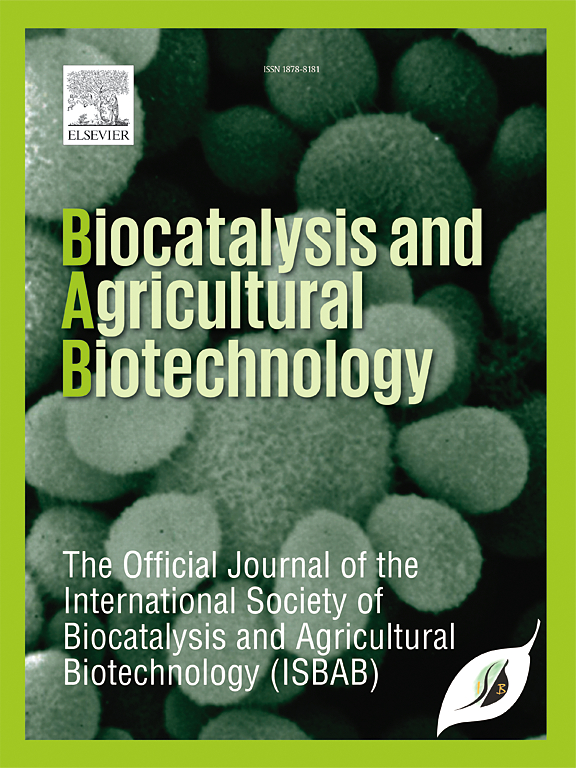Comparative analysis of Polyphenolic Compound Production from Rubus adenotrichos Schltdl. in a stirred tank bioreactor using two different impellers
IF 3.4
Q2 BIOTECHNOLOGY & APPLIED MICROBIOLOGY
引用次数: 0
Abstract
Rubus adenotrichos Schltdl. has a high content of polyphenolic compounds with antioxidant properties; however, obtaining these from the fruits presents limitations because it depends on the plant physiology, developmental stage, and environmental conditions. Cell cultures in a stirred tank bioreactor (STR) offer an alternative for obtaining plant secondary metabolites. The objective of this study was to evaluate the effect of two impellers with different mixing patterns, a marine impeller, and a Rushton turbine impeller, on the culture of R. adenotrichos cells and the production of gallic acid, vanillin and ellagic acid, using an STR. It was observed that the marine impeller enhanced cell growth, reaching 2.320 g L−1 of dry biomass, but did not promote the accumulation of polyphenolic compounds, producing 0.528 mg L−1. Conversely, with the Rushton turbine, cell growth was limited (1.680 g L−1 dry biomass), but the production of the target metabolites was favored, producing a total of 1.043 mg L−1. The decrease in biomass and the increase in specialized metabolite content may be associated with smaller eddy sizes produced by the Rushton turbine, leading to the activation of lethal and sublethal mechanisms in plant cells due to hydrodynamic stress. Additionally, thermal concentration treatments differentially affected each analyzed metabolite, with gallic acid being the least affected compound when the concentration temperature was increased. The results establish the basis for the bioprocess advancement of R. adenotrichos Schltdl., focused on developing a sustainable strategy for natural resource management and as a source of phenolic compounds on a large scale.
求助全文
约1分钟内获得全文
求助全文
来源期刊

Biocatalysis and agricultural biotechnology
Agricultural and Biological Sciences-Agronomy and Crop Science
CiteScore
7.70
自引率
2.50%
发文量
308
审稿时长
48 days
期刊介绍:
Biocatalysis and Agricultural Biotechnology is the official journal of the International Society of Biocatalysis and Agricultural Biotechnology (ISBAB). The journal publishes high quality articles especially in the science and technology of biocatalysis, bioprocesses, agricultural biotechnology, biomedical biotechnology, and, if appropriate, from other related areas of biotechnology. The journal will publish peer-reviewed basic and applied research papers, authoritative reviews, and feature articles. The scope of the journal encompasses the research, industrial, and commercial aspects of biotechnology, including the areas of: biocatalysis; bioprocesses; food and agriculture; genetic engineering; molecular biology; healthcare and pharmaceuticals; biofuels; genomics; nanotechnology; environment and biodiversity; and bioremediation.
 求助内容:
求助内容: 应助结果提醒方式:
应助结果提醒方式:


